The Creepy Syndrome review

- 0 Comments
Promising retro short story anthology afflicted by lack of depth and any real scares
My sixty-two-year-old mother hates horror. She avoids anything that stresses nerves and makes a wide berth around even the notion of suspense. Not to put too fine a point on it, but my mother is probably just the type of audience that will be enthralled by Boomfire Games’ The Creepy Syndrome, a collection of four ultra-short lo-fi vignettes that are noteworthy more as a creative endeavor and for their throwback style rather than what they offer in terms of outright thrills and chills. It hews closer to the adventure genre than a number of other horror titles out there, what with storylines and puzzle elements being front and center, but at around an hour of playtime, the experience is over almost before it’s even started.
The Creepy Syndrome consists of four episodes – “A Watchful Gaze,” “Lord of the Road,” “The Red Button,” and “Nocturne” – all encapsulated by the narrative framework of a psychotherapy session. With distinct characters and plotlines, it’s not exactly clear how each of the four scenarios is related to the nameless protagonist (if at all), other than the general sense of unease we can assume they’re experiencing – think of the whole thing as a collection of “Twilight Zone” episodes randomly shuffled together, wholly disconnected in all but tone and therapeutic framework. Completing all four rewards you with a short ending scene as your session concludes, and there are multiple endings available depending on how each individual story played out. Each of the four episodes has two endings – ostensibly a “good” ending and a “bad” one – and I was able to play and replay each vignette to achieve all permutations in about two hours total. On one hand, that makes for a very convenient single-afternoon play experience; on the other, it’s hard to be fully satisfied with the scant few morsels in this meal.

Though you can choose to play the episodes in any order, “A Watchful Gaze” kicks the list off with a short tale about the crippling guilt felt by a drunk driver who got behind the wheel one night and caused a brutal crash, killing an innocent family in the process. With the protagonist tortured by a guilty conscience during the day and haunted by nightmare apparitions whenever they close their eyes, the episode recounts their struggle to forget and save their sanity. You’ll traverse an endless, dreamlike hallway while constantly stumbling upon telltale reminders of the accident, as well as horrific dream manifestations that you can choose to ignore or try to kill, all via a point-and-click interface. Some light puzzle elements are mixed in as well, involving pretty standard adventure fare like assembling paper scraps into a child’s drawing of their family or decoding a note to figure out the solution to a combination lock.
The episode is designed as a throwback first-person dungeon crawler, showing the hallway from the protagonist’s perspective, screen after static screen of the same enclosing walls leaving no path other than the one ahead. Everything is presented in a classic green-and-black-tinged Game Boy art style, which works well enough for the surreal, dreamlike setting you find yourself in. The way monstrous visages will occasionally emerge from the pitch-black tunnel just a few feet ahead of you is especially effective. While there is no music in this episode, there are ambient sounds and even some decent voice-over narration to accompany the protagonist’s interior monologue, which is far more than that bygone handheld system would have been able to handle.
“Lord of the Road” may be the most “adventure gamey” episode of the bunch. It’s Halloween night, and strange activity has been reported near a remote site where a cult called the Children of the Road committed mass suicide. As the dispatched Inspector Rodriguez, you must explore the cult’s woodland compound to make sure all is in order. Using the keyboard, you control the inspector directly from a bird’s eye perspective as you navigate the forest paths, collect inventory items and read notes you come across, and check out the handful of buildings on the grounds. It isn’t long before odd things begin to occur: a ghostly shape moving in an otherwise abandoned building, an animal carcass disappearing as soon as your back is turned, stumbling across a ritual altar in the deep recesses of the forest.
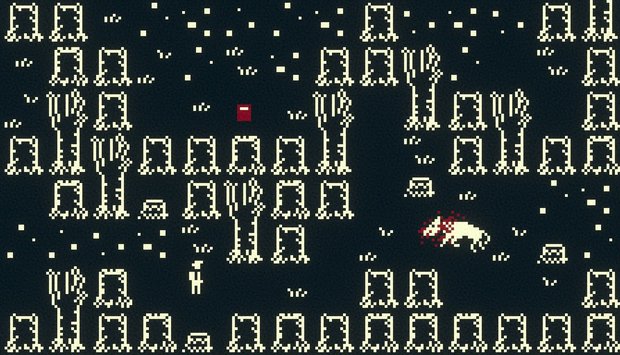
Although the gameplay in “Lord of the Road” may feel familiar, its presentation is easily the most antiquated of the lot. The view is presented via very simple, archaic white-pixels-on-black-background graphics, highly reminiscent of some of gaming’s earliest attempts at programming visuals. Still, the almost monochromatic color palette (accentuated by literal splashes of red as the episode unfolds) is the lesser of the two evils. Far more unsavory and downright unpalatable is the chiptune “soundtrack,” here consisting almost exclusively of the same ten or so single notes played in a constantly repeating loop. While this episode, like the others, only takes a quick fifteen minutes to play through, that time is stretched painfully by the discordant attack on your hearing by its single “song.”
Where “Lord of the Road” feels like an early adventure title from a gameplay perspective, “The Red Button” pushes its puzzle elements to the forefront more successfully. It’s based on a premise as simple as it is frightening: in a barren and blasted future, you are the lone custodian charged with manning a nuclear missile launch bunker, spending all day every day awaiting that one fateful phone call to push the dreaded red button and bid farewell to the remnants of the human race … and as the screen fades in and the episode begins, the phone begins to ring.
The horror here is existential, as the nameless (and faceless, since we never see them) protagonist has time to let their thoughts dwell on the irreversible decision they are about to make. The puzzles come in the form of several locked safety doors and broken-down mechanisms that need to be overcome to activate the final nuclear launch sequence. Whether that means searching the handful of screens for a few inventory items or turning knobs and valves to route and reroute power, it’s a straightforward but enjoyable exercise in puzzling.
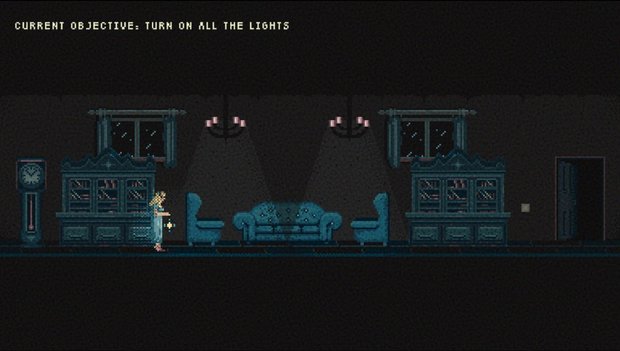
There’s little worth writing home about in this episode’s presentation, though I suppose the lack of music does help to elevate the ominous ringing of the phone and the disquieting, cavernous silence of the bunker – a stark reminder of your current isolation and the impending annihilation of the species. The game is presented as a side-view cross-section of the bunker, with the handful of screens that make up its innards being serviceable at best. At least locating objects of interest is easy enough using the mouse-based point-and-click interface. A visual bit of uneasy tension is introduced in the form of twisted human visages that periodically flash across the screen, faces rent in tortured grimaces to really drive home the point that there is no salvation to be found in this particular tale. Unless, of course, you ultimately decide not to push the red button at all.
Rounding out the experience is “Nocturne,” which comes the closest to what you’d expect from a modern horror title. It is a dark and rainy night, and young Sara finds herself home alone in the house she shares with her mother. Naturally, Sara does what all young girls in these stories are wont to do: perform a secret magical ritual under the naïve belief that it is safe and completely harmless, and instead unwittingly conjure up a dark, demonic force that haunts her mercilessly. Players must fulfill Sara’s plan in three easy steps: turn on all the lights in her home, speak an incantation in front of her bathroom mirror, and turn off every light in her house, plunging it into darkness as she returns to bed.
It’s as simple as it sounds, though – of course – strange things begin happening almost from the very beginning, whether it’s a window mysteriously breaking or grotesque claw marks gouged into the kitchen wall that weren’t there moments earlier. As Sara traverses a darkened house on the way back to her upstairs bedroom, an unseen presence begins stalking her, and you must find a hiding space for Sara and perform a rhythm-based mini-game to control her breathing, pressing a button on the keyboard whenever an indicator passes through the “safe zone” of the on-screen bar.
Despite a small amount of dialogue between Sara and her sister at the start of the episode, there is no voice-over here. However, “Nocturne” features the most consistent attempt at an actual soundtrack in Creepy Syndrome. True, it’s essentially just a single track that plays when things are peaceful, and a more frenzied piece that takes over during the stalking sections, but it’s at least an overt attempt at musical accompaniment. The episode’s pixel art style works fine for its side-scrolling presentation, though the focus isn’t on portraying Sara’s humble abode in lush detail. Rooms are sparsely lit, only to be completely plunged into darkness as the lights are extinguished later on. The whole trip, from start to finish, takes less than ten minutes, and is extremely linear.
Final Verdict
The overall Creepy Syndrome experience is a bit of an odd duck. There’s nothing here to outright dislike or be let down by – the episodes tell four very different mini-narratives, and each one is over so quickly that none outstay their welcome. At the same time, there is just not a lot to really be excited about, and very little reason to actively recommend someone spend their next hour (or two, for completionists) playing it, other than maybe those who’d like to play something a little spooky but have a very low tolerance for thrills and chills. It may be best to think of it as a proof of concept for some future title – even an anthology of shorter stories – that has a bit more meat to it. I’ve spent more time writing about The Creepy Syndrome than actually playing it, but if reading about it this far has held your interest, you’re probably the right audience for the game.
Hot take
The idea behind this quirky anthology of four very distinct anecdotes is commendable, but its blink-and-you-missed-it brevity does not pair well with its already limited chill factor, leaving The Creepy Syndrome feeling not particularly worthwhile.
Pros
- Dabbles in distinct approaches to art style and gameplay
Cons
- Extremely short, with each of the four episodes taking less than an hour to complete
- Lack of thrills and chills means it’s creepy in name only
Pascal played The Creepy Syndrome on PC using a review code provided by the game's publisher.


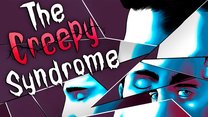
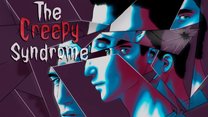


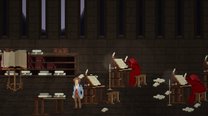

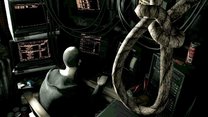

0 Comments
Want to join the discussion? Leave a comment as guest, sign in or register in our forums.
Leave a comment